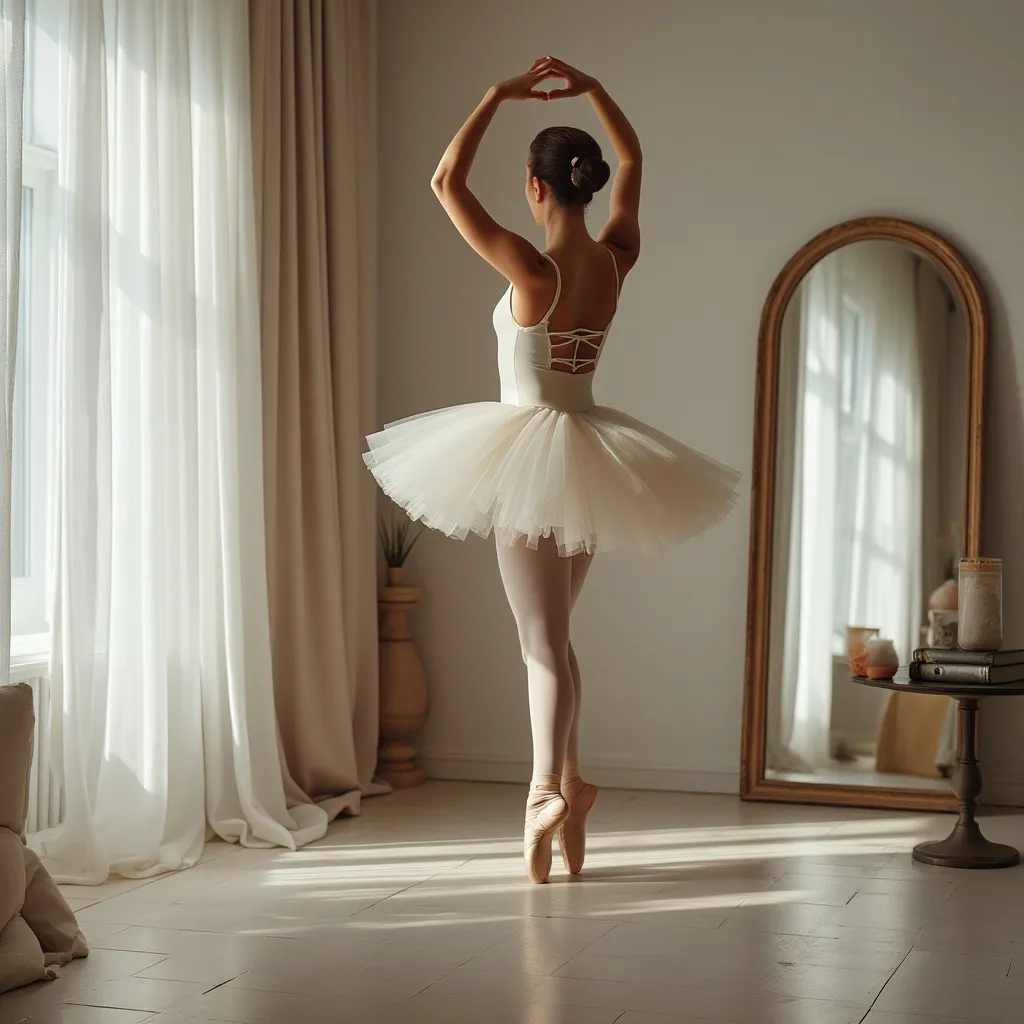The Role of Meditation and Mindfulness in Ballet Training

Introduction
Ballet is a highly demanding art form that requires not only physical strength and flexibility but also mental resilience and focus. As dancers strive for perfection, they often face intense pressure, both from themselves and from external sources. In recent years, meditation and mindfulness have emerged as powerful tools to help ballet dancers manage stress, enhance their performance, and maintain overall well-being. This article explores the role of meditation and mindfulness in ballet training, examining their benefits, techniques, and practical applications.
The Importance of Mental Well-being in Ballet
Physical and Mental Demands
Ballet is a rigorous discipline that demands a high level of physical fitness, coordination, and precision. Dancers must master complex movements, maintain perfect posture, and execute routines with grace and fluidity. However, the mental demands are equally significant. Ballet dancers must stay focused, manage performance anxiety, and cope with the pressures of auditions, rehearsals, and performances.
Common Mental Health Challenges
Many ballet dancers face mental health challenges such as anxiety, depression, and burnout. The constant pursuit of perfection, coupled with the competitive nature of the field, can lead to significant stress. Additionally, the physical toll of ballet can result in injuries, which can further exacerbate mental health issues.
The Role of Meditation in Ballet Training
What is Meditation?
Meditation is a practice that involves focusing the mind and eliminating distractions to achieve a state of mental clarity and emotional calm. It has been used for centuries in various cultures and spiritual traditions to promote inner peace and well-being.
Benefits of Meditation for Ballet Dancers
Meditation offers numerous benefits for ballet dancers, including:
- Stress Reduction: Meditation helps reduce stress by calming the mind and promoting relaxation. This can be particularly beneficial for dancers who face high levels of pressure and anxiety.
- Improved Focus: Regular meditation practice enhances concentration and mental clarity, allowing dancers to stay focused during rehearsals and performances.
- Emotional Regulation: Meditation helps dancers manage their emotions, reducing the impact of negative feelings such as frustration and self-doubt.
- Enhanced Creativity: By quieting the mind, meditation can foster creativity and innovation, enabling dancers to explore new movements and expressions.
- Better Sleep: Meditation promotes better sleep quality, which is essential for physical recovery and overall well-being.
Types of Meditation for Ballet Dancers
There are various types of meditation that can benefit ballet dancers, including:
- Mindfulness Meditation: This practice involves paying attention to the present moment without judgment. It helps dancers stay grounded and focused during their training.
- Guided Meditation: In guided meditation, a teacher or recording leads the practitioner through a series of visualizations or relaxation techniques. This can be particularly helpful for beginners.
- Transcendental Meditation: This technique involves silently repeating a mantra to achieve a state of deep relaxation and mental clarity.
- Body Scan Meditation: This practice involves mentally scanning the body for areas of tension and consciously relaxing them. It can help dancers become more aware of their physical sensations and improve body alignment.
The Role of Mindfulness in Ballet Training
What is Mindfulness?
Mindfulness is the practice of being fully present and engaged in the current moment. It involves paying attention to thoughts, feelings, and sensations without judgment. Mindfulness can be cultivated through various techniques, including meditation, breathing exercises, and mindful movement.
Benefits of Mindfulness for Ballet Dancers
Mindfulness offers several benefits for ballet dancers, including:
- Enhanced Body Awareness: Mindfulness helps dancers become more attuned to their bodies, improving their ability to execute movements with precision and grace.
- Injury Prevention: By paying close attention to their bodies, dancers can identify and address areas of tension or imbalance, reducing the risk of injury.
- Improved Performance: Mindfulness helps dancers stay focused and present during rehearsals and performances, leading to more consistent and polished routines.
- Emotional Resilience: Mindfulness helps dancers manage their emotions and cope with the ups and downs of their training and careers.
- Better Stress Management: Mindfulness techniques can help dancers manage stress and anxiety, promoting overall mental well-being.
Mindfulness Techniques for Ballet Dancers
There are several mindfulness techniques that can benefit ballet dancers, including:
- Breathing Exercises: Focusing on the breath can help dancers stay grounded and calm. Techniques such as deep breathing, diaphragmatic breathing, and box breathing can be particularly effective.
- Mindful Movement: Practicing movements mindfully, with full attention to the body’s sensations and alignment, can enhance body awareness and improve technique.
- Mindful Observation: Taking a few moments to observe the surroundings, such as the studio or stage, can help dancers stay present and focused.
- Gratitude Practice: Reflecting on positive aspects of their training and career can help dancers cultivate a positive mindset and reduce stress.
Practical Applications of Meditation and Mindfulness in Ballet Training
Incorporating Meditation into Daily Routine
Ballet dancers can incorporate meditation into their daily routines by setting aside a few minutes each day for practice. This can be done in the morning to start the day with a clear mind, during breaks to recharge, or in the evening to unwind and relax.
Using Mindfulness During Rehearsals and Performances
Mindfulness can be integrated into rehearsals and performances by focusing on the present moment and paying attention to the body’s sensations and movements. Dancers can use mindfulness techniques to stay calm and focused, manage performance anxiety, and enhance their overall performance.
Creating a Supportive Environment
Ballet schools and companies can create a supportive environment by encouraging the practice of meditation and mindfulness. This can include offering meditation and mindfulness classes, providing resources such as guided meditation recordings, and fostering a culture of mental well-being.
FAQ
How often should ballet dancers practice meditation?
The frequency of meditation practice can vary depending on individual preferences and schedules. However, even a few minutes of daily meditation can offer significant benefits. Dancers can start with short sessions and gradually increase the duration as they become more comfortable with the practice.
Can beginners benefit from meditation and mindfulness?
Yes, beginners can benefit greatly from meditation and mindfulness. These practices can help new dancers manage the initial stress and anxiety associated with learning ballet, improve their focus and concentration, and enhance their overall well-being.
Are there any specific meditation apps recommended for ballet dancers?
There are several meditation apps that can be beneficial for ballet dancers, including Headspace, Calm, Insight Timer, and Simple Habit. These apps offer guided meditations, breathing exercises, and mindfulness techniques that can be easily incorporated into a dancer’s routine.
How can ballet teachers incorporate mindfulness into their classes?
Ballet teachers can incorporate mindfulness into their classes by starting or ending sessions with a few minutes of guided meditation or breathing exercises. They can also encourage students to practice mindful movement by paying close attention to their bodies and movements during exercises and routines.
What are some common challenges dancers might face when starting meditation?
Common challenges dancers might face when starting meditation include restlessness, difficulty focusing, and impatience. It’s important to approach meditation with an open mind and be patient with oneself. Starting with short sessions and gradually increasing the duration can help overcome these challenges.
Conclusion
Meditation and mindfulness are powerful tools that can significantly enhance ballet training. By promoting mental clarity, emotional resilience, and overall well-being, these practices help dancers manage the physical and mental demands of ballet. Incorporating meditation and mindfulness into daily routines, rehearsals, and performances can lead to improved focus, reduced stress, and enhanced performance. As the ballet community continues to recognize the importance of mental well-being, meditation and mindfulness are likely to become integral components of ballet training.




